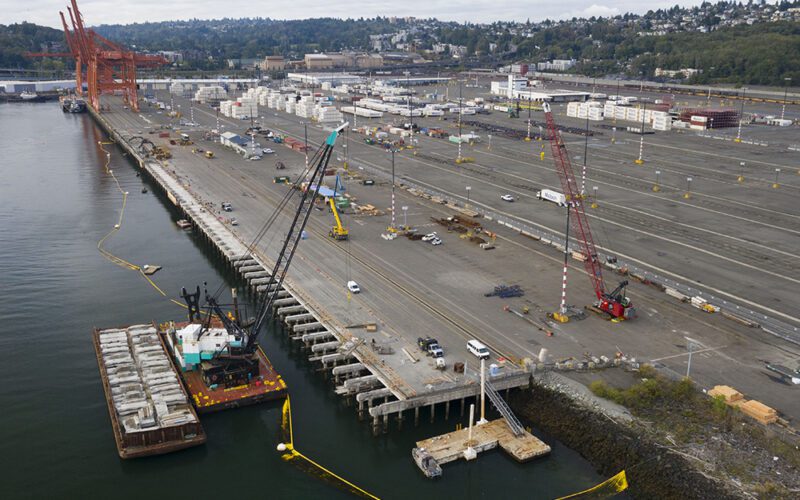
The second phase of the Terminal 5 Modernization Program, a key expansion project for trade in the Seattle harbor, is now complete, the Northwest Seaport Alliance said March 29.
In a statement, the Seaport Alliance and SSA Terminals lauded the modernization project, which includes 185 acres of capacity for cargo and shore power capability at two berths.
The newly upgraded Terminal 5 features two reconfigured berths with six modern super-post Panamax cranes. On-dock rail facilities, with more refrigerated plug-ins, support agricultural exporters and lower truck traffic near the terminal, NWSA said.
“The opening of Phase 2 of Terminal 5 marks a significant milestone for both economic expansion and increased sustainable operations in the NWSA gateway,” Port of Seattle Commission President and NWSA Co-Chair Hamdi Mohamed said. “Together with our partners, the terminal boasts investments in shore power, state-of-the-art stormwater systems and hybrid-electric equipment alongside increased cargo capacity, which ensures more goods can move through the terminal in a sustainable and efficient manner.”
The Seaport Alliance, SSA Terminals, LLC and its partners invested more than $500 million in modernizing the terminal, which began construction in July 2019. The reconfiguration of the north berth was complete in January 2022, wrapping up the program’s first phase.
Partners included SSA Terminals, LLC. – a joint venture between SSA Marine, Matson, Inc. and Mediterranean Shipping Co.– Global Infrastructure Partners, and GIC-owned Terminal Investment Ltd.
“The modernized and upgraded Terminal 5 facility will become … one of the few facilities that can handle 24,000 TEU vessels and offering … on-dock rail service,” Terminal Investment Ltd. Managing Director-North America Tom Van Eynde said, adding that Terminal 5 is an attractive gateway for intermodal cargo and allows capitalization on a strong local consumer market.

